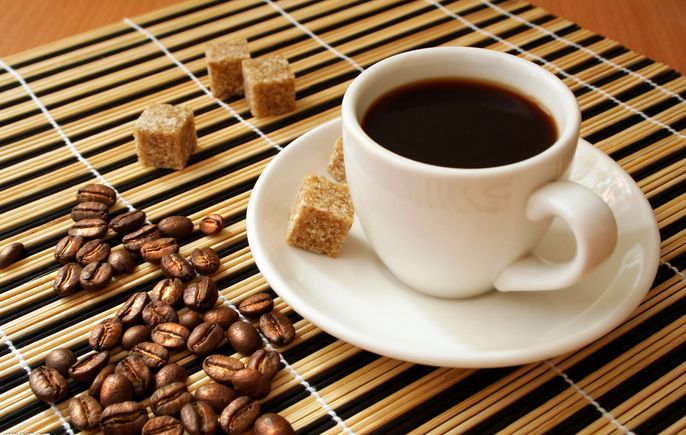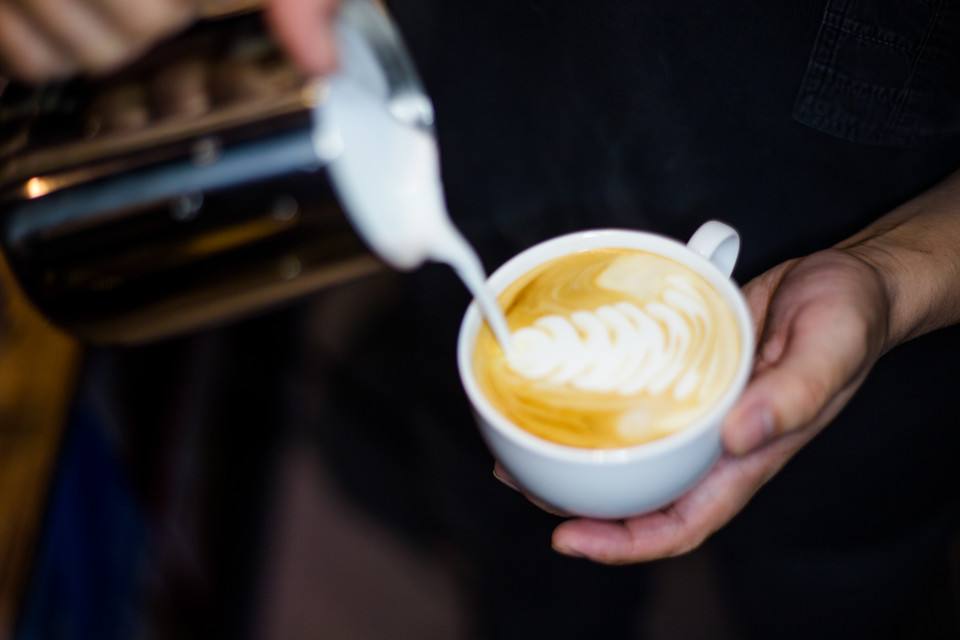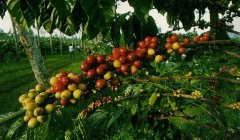Theoretical study, the Origin of Coffee
Follow the caf é (Wechat official account vdailycom) and found that Beautiful Cafe opened a small shop of its own.
-- Segmentation line.
Origin
There is no way to examine the source of coffee. One of the many legends refers to the highlands of Cafa province in southwestern Ethiopia. It is said that a shepherd became very excited and lively when he discovered that the sheep had eaten a plant more than a thousand years ago, so he discovered coffee. It is also said that due to a wildfire, a coffee forest was destroyed and the smell of barbecue coffee attracted the attention of the surrounding residents. The people chewed the fruit of this plant at first to cheer them up, then baked and ground it into flour to make bread, which was used as food for warriors to improve their courage to fight. However, these legends are lack of historical documents, only appear in later travel biographies, it is impossible to study the real origin of coffee.

It was not until around the 11th century that people began to use boiled coffee as a drink. In the 13th century, Ethiopian troops invaded Yemen and brought coffee to the Arab world. Because the Islamic doctrine forbids people to drink alcohol, some religious people think that this kind of drink stimulates the nerves and violates the doctrine. Coffee shops were banned and closed for a time, but the Egyptian sultan thought that coffee was not against the doctrine, so the ban was lifted. Coffee drinks quickly became popular in the Arab region. The word coffee Coffee, which comes from the Arabic Qahwa, which means "plant drink", later spread to Turkey and became the source of the word in European languages. The method of growing and making coffee has also been continuously improved and perfected by the Arabs.
However, before the 15th century, coffee had long been monopolized by the Arab world and spread only among Muslim countries; at that time, it was mainly used in medicine and religion. Muslim doctors and monks admit that coffee has the functions of refreshing, brain-waking, stomach-strengthening, body-strengthening and hemostasis; the use of coffee has been documented since the beginning of the 15th century and integrated into religious ceremonies during this period. At the same time, it also appeared in the folk as a daily drink. Because alcohol was strictly prohibited in the Muslim world, coffee became a very important social drink at that time.
Until the 16th and 17th centuries, coffee was introduced into Europe through the merchants of Venice and the Dutch hegemony of the sea. soon, this black drink, which was full of oriental mystery and rich aroma, was competed by the aristocratic gentry class. the price of coffee also rose with the tide, and even produced the title of "black gold", and then in the era of great navigation. Through the spread of shipping, the whole world has been brought into the production and consumption of coffee.
The composition of coffee
Caffeine: it has a particularly strong bitter taste and stimulates the central nervous system, heart and respiratory system. Appropriate amount of caffeine can also reduce muscle fatigue and promote digestive juice secretion. Because it promotes kidney function, it is diuretic and helps the body to expel excess sodium ions from the body. But eating too much can lead to caffeine poisoning.
Tannic acid: the boiled tannic acid will decompose into pyrouric acid, so the coffee that has been brewed for too long will taste worse.
Fat: the most important ones are acid fat and volatile fat.
Acidic fat: that is, fat contains acid, its strength will vary according to the type of coffee.
Volatile fat: is the main source of coffee aroma, will emit about 40 aromatic substances.
Protein: the main source of calories, the proportion is not high. Most of the protein in coffee powder will not dissolve out when brewing coffee, so the intake is limited.
Sugar: coffee beans contain about 8% sugar. After baking, most of the sugars are converted to caramel, which browns the coffee and combines with tannins to produce sweetness.
Fiber: the fiber of raw beans will be carbonized after baking and combine with caramel to form the hue of coffee.
Minerals: contains a small amount of lime, iron, phosphorus, sodium carbonate and so on.
Important Notice :
前街咖啡 FrontStreet Coffee has moved to new addredd:
FrontStreet Coffee Address: 315,Donghua East Road,GuangZhou
Tel:020 38364473
- Prev

The basic practice of flower drawing leaves
Following Ka Ping (Wechat official account vdailycom) found that Beautiful Cafe opened a small shop of its own-- Segmentation Line. Step 1, put the milk pot close to the surface of the coffee when it is seven minutes full, and see that the milk foam is formed on the surface of the coffee.
- Next

Theoretical study, from coffee tree to coffee
Coffee is a perennial evergreen shrub or small tree of Rubiaceae. It is a horticultural perennial cash crop with the characteristics of fast growth, high yield, high value and wide market. Wild coffee trees can grow to a height of 5 to 10 meters, but coffee trees planted on the manor are often cut to less than 2 meters in order to increase their fruit and facilitate harvesting. The first flowering period of a coffee tree is about the age of the tree.
Related
- What is the meaning of lactic acid fermentation with coffee bean treatment?
- How to judge the state of foam by sound?
- How does the latte pull out the unicorn pattern? Come to get for a little trick to improve the flower pull!
- Will flower pulling affect the taste of the latte?
- Do you know the history of coffee?
- The difference between honey treatment and sun washing what is raisin honey treatment?
- What kind of milk can a novice use to make coffee foam to keep the foam longer? The correct method and skills of milking tutorial sharing
- Why do washed coffee beans taste sour? Flavor characteristics of washed Coffee
- Introduction to the skill of how to practice the size and height of water injection around the circle of hand-brewed coffee
- How do beginners practice coffee flower drawing from scratch?

